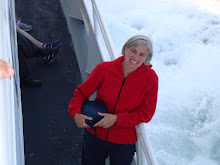KN: In FACES OF THE MOON you beautifully juxtapose scientific information with personification. Why did you decide to personify the moon? Was it because lunar phases sounds so similar to lunar faces?
BC: Granted, it’s not the traditional style for teaching about the Moon, however it is one that I have found very successful. I developed this book’s approach based on what excited and engaged young students when teaching them about astronomy. One of my central goals with FACES OF THE MOON was to help readers discover a connection, or relationship with Earth’s satellite world. Throughout our history and in the mythology of different cultures, the Moon was often referred to as a female entity. I love that, and it is why the Moon is a “she” in the book. Also, describing the changing “face” of the Moon in the book, the reader can relate to something familiar while being introduced to the scientific term “phase.” I believe to reach the reader/learner, it is best to meet them where they are, then guide them by the hand from there.
KN: I love how you included what time each moon rises and sets, because it’s necessary if one is going to try and observe the moon each day. Why did you decide to set this information apart from the poetry?
BC: Observing the actual Moon bridges what the reader learns in the book to the real world. Each rhyming stanza in FACES OF THE MOON tells you orbital, or visual aspects about a particular phase. I included the Moon phase rise/set times as an observer’s cross-reference, and not necessarily as part of the main text. What I find interesting is that this rise/set time aspect has not been commonly used in books about the Moon. It was my goal to relate to the Moon within the frame of our everyday lives as Earthlings. Simply by watching changes in the sunlit part of the Moon, and in its position in the sky, day or night, we learn that we’re actually witnessing the Moon moving in orbit around our planet.
KN: I read on your website that you started a grassroots movement in your community to cut down light pollution in your hometown. What tips do you have for readers who are looking to make a change within their communities?
BC: A big part of the problem is that not everybody knows what this is. So, first I’ll offer a brief explanation: “Light pollution” is the sky glow and intrusive glare caused by poorly directed and overdone outdoor lighting at night. Nowadays, it blots out much of our view of the starry skies, and can disrupt the nocturnal cycles of living things on Earth. Although unintentional, it is an unnecessary, harmful and wasteful side effect of our modern world. With a little bit of public education and awareness, it is not difficult to convince others of the benefits of using lighting more discreetly. The basic solutions are: 1. Use fully shielded outdoor lighting to direct light only where it is needed. This prevents glare, allowing your eyes to see better at night using less light. It also prevents light trespass from intruding into neighboring homes and natural areas. Shielding also prevents light from being cast upward into the sky, where it serves no purpose. And, 2. By using only the amount of light needed for the task, and by using it only when it is actually needed, we can also significantly reduce our energy use. To find out more, go here:
http://www.bobcrelin.com/author-main.html
KN: In addition to fascinating information about your grassroots movement, you have a fantastic video from La Serena, Chile which translates your book, into Spanish. I lived in Chile, and I’m wondering how you obtained that video?
BC: The students of Colegio Carlos Condell de la Haza in La Serena, Chile chose my first book, THERE ONCE WAS A SKY FULL OF STARS as their favorite from a collection of astronomy books that had been brought to them. As a school project, they proceeded to translate the book's text to Spanish, then hand-illustrated and hand-bound copies of the book in the new translation. They sent me a copy - it's great! In addition, the students created a video production of the translated book, and subsequently posted it on the web. When I first wrote this book’s manuscript in 1996, my goal was to spread the message far and wide about fixing the needless problem of light pollution. So far, so good!
KN: Is there anything else you’d like to share with us?
BC: FACES OF THE MOON and my MOON GAZERS’ WHEEL invention were born from my popular, curriculum-based 5th grade classroom lesson/activity, that has been in use in the CT schools over the last 4 years. The complete guided lesson/lab is available as a free, downloadable PDF teacher's guide, designed for use with the book. The guide is available at a number of locations including here:
http://www.teachervision.fen.com/discussion-guide/printable/64143.html
Visit my web site to find out more: BobCrelin.com
KN: Thanks so much.
Subscribe to:
Post Comments (Atom)

Thanks for this interview Kate. It's so interesting to learn more abotu Face of the Moon came together.
ReplyDeleteThanks Melissa!
ReplyDeleteReaders if you want to find out about author and scientist Melissa Stewart's creative process, be sure to check out her blog Celebrate Science. In addition, she has fun Friday facts and keeps a wicked journal about the tree outside her window.